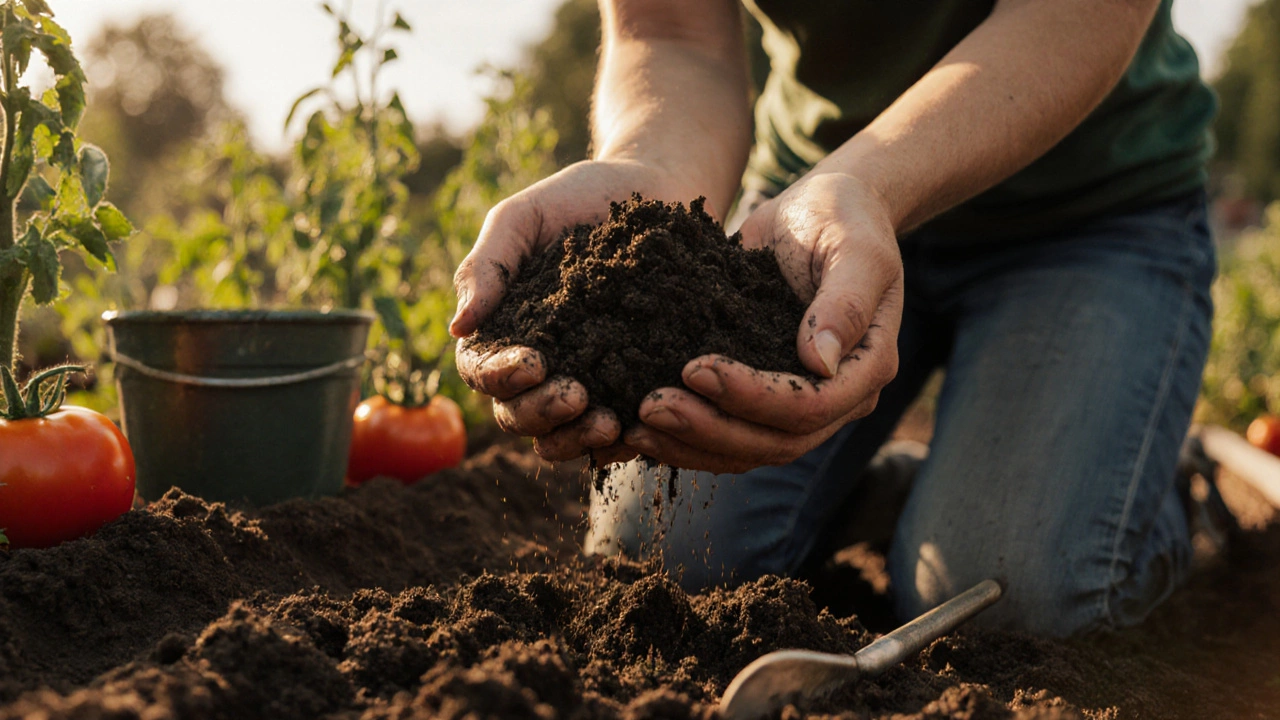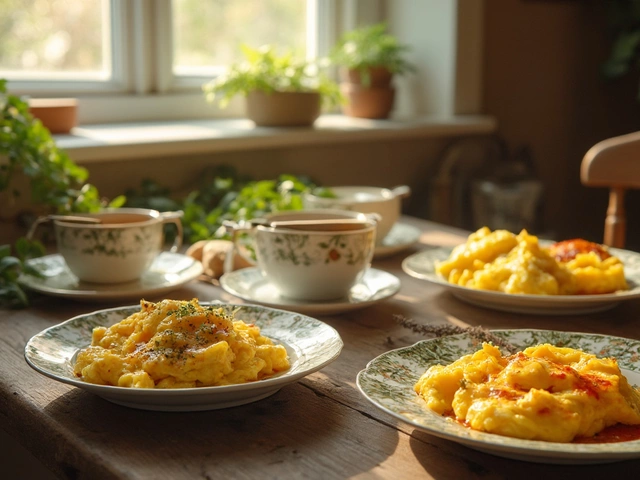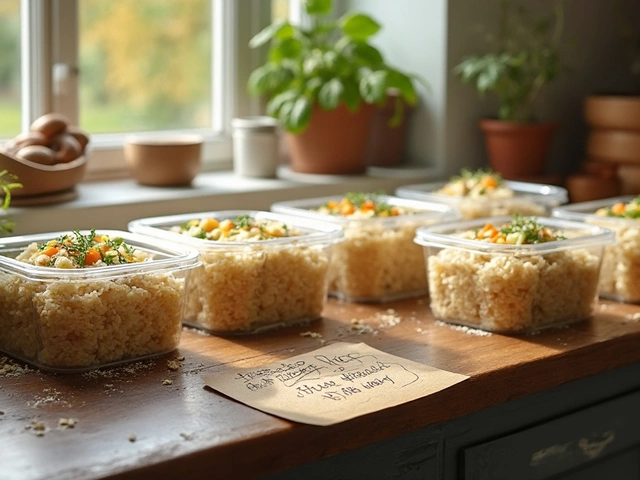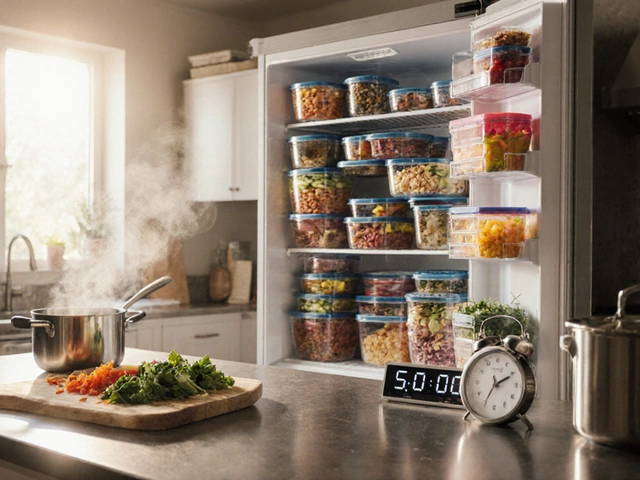Soil Health Assessment Tool
How Healthy is Your Garden Soil?
This 3-step assessment helps you evaluate your soil's health based on the feel, smell, and color tests described in the article.
Step 1: Soil Feel Test
Grab a handful of moist soil and apply slight pressure. How does it feel?
Step 2: Soil Smell Test
What does your soil smell like?
Step 3: Soil Color Test
What color is your soil?
Soil Health Assessment Results
Enter your soil characteristics above to see your results
When you stroll through a garden that looks like it could feed a whole family, the first thing you might notice isn’t the flashy flowers or the towering tomatoes - it’s the earth beneath your feet. That ground is the garden essential that decides whether seeds sprout, vines cling, and herbs flourish. In plain terms, the most important thing in a garden is soil health the overall condition of the soil, including its structure, organic matter content, nutrient balance, pH level, and biological activity. Everything else - water, sunlight, plant choice - works on the foundation that healthy soil provides.
Why Soil Health Outshines All Other Factors
Think of a garden as a building. The foundation (soil) holds up the walls (plants). No matter how great the paint or roofing materials are, a cracked foundation means the whole structure will settle unevenly or collapse. Healthy soil does three critical things:
- It stores water efficiently so roots get moisture when rain is scarce.
- It supplies nutrients in a form plants can absorb, reducing the need for synthetic fertilizers.
- It hosts a bustling community of microorganisms that protect roots from disease and help break down organic matter.
When any of these three pillars weakens, you’ll see stunted growth, yellowing leaves, or soil that drips water straight through without soaking.
How to Quickly Assess Your Soil’s Health
Before you buy a bag of soil or start digging, take a few minutes to check where you stand. Here’s a simple, no‑equipment method that works for most home gardeners:
- Feel Test: Grab a handful of moist soil. It should clump together but crumble easily when you apply slight pressure. If it feels powdery, it’s likely low in organic matter.
- Smell Test: Healthy soil smells earthy, like fresh rain on a forest floor. A sour or chemical odor hints at imbalance.
- Color Check: Dark brown or black soil usually contains more organic material. Light gray or yellow often means sand or poor organic content.
If you want numbers, a basic DIY pH kit (available at garden centers) can tell you whether the soil is too acidic or alkaline for most vegetables (pH 6.0-7.0 is ideal). For deeper insight, send a sample to a local cooperative extension - they’ll give you a nutrient breakdown and recommend amendments.
Building Soil with Organic Matter
One of the fastest ways to boost soil health is by adding organic matter. This is where compost decomposed plant material and kitchen scraps that enrich soil with nutrients and improve structure shines. Here’s how to get the most out of it:
- Layer It: Spread a 2‑inch layer of compost over your garden beds each spring. Lightly incorporate it into the top 6 inches of soil.
- Mix In Mulch: After planting, add a 3‑inch blanket of mulching organic or inorganic material placed on the soil surface to retain moisture, suppress weeds, and add organic matter as it breaks down. Straw, shredded leaves, or wood chips work well.
- Rotate Materials: Alternate kitchen scrap compost with leaf mold and garden waste to keep the microbial community diverse.
These practices not only feed the soil but also create a sponge‑like structure that holds water without becoming soggy.
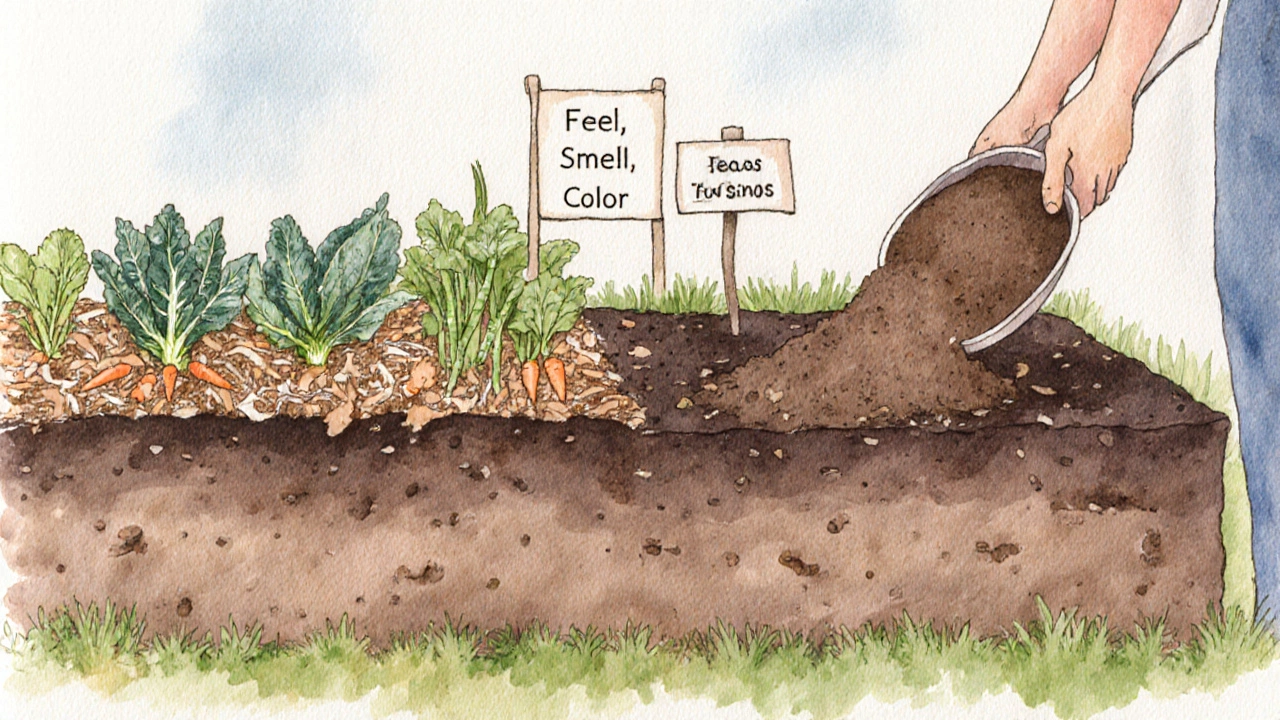
Managing Water and Drainage
Even the healthiest soil can fail if water isn’t managed correctly. Two common problems arise:
- Waterlogging: Too much water pushes air out of the soil pores, choking roots. Ensure good drainage the process by which excess water exits the soil profile, preventing root rot and other moisture‑related issues. If your garden sits in a low spot, create a shallow trench or install a French drain.
- Drought Stress: Sandy soil drains quickly, leaving roots dry. Use a soaker hose or drip irrigation to deliver water directly to the root zone, reducing evaporation.
Combine proper irrigation with mulching, and you’ll see less weed competition, more stable moisture, and healthier roots.
Balancing pH and Nutrients
Soil pH acts like a gatekeeper for nutrient availability. When the pH strays far from the 6.0-7.0 sweet spot, essential minerals such as phosphorus, potassium, and magnesium become locked away. If a test shows pH5.5, you can raise it with garden lime; if it reads 7.5, elemental sulfur can bring it down.
But pH is only half the story. Nutrient balance matters too. Here’s a quick cheat sheet:
- Nitrogen (N): Promotes leafy growth. Add blood meal or alfalfa meal.
- Phosphorus (P): Encourages root and flower development. Rock phosphate works well in organic systems.
- Potassium (K): Boosts overall vigor and disease resistance. Wood ash provides a gentle potassium source.
Apply these amendments sparingly - over‑feeding can burn roots and upset the microbial balance.
Encouraging Beneficial Microorganisms
Healthy soil hosts a hidden army of bacteria, fungi, and protozoa that break down organic matter, fix nitrogen, and suppress pathogens. To nurture them:
- Reduce Tillage: Minimal disturbance keeps fungal networks intact.
- Use Cover Crops: Legumes like clover add nitrogen‑fixing bacteria, while rye provides biomass for microbes.
- Avoid Synthetic Chemicals: Broad‑spectrum pesticides can wipe out beneficial microbes along with pests.
If you’re curious about the microscopic world, you can sprinkle a handful of mycorrhizal inoculant a preparation containing beneficial fungal spores that form symbiotic relationships with plant roots into planting holes. The result is faster nutrient uptake and more drought‑tolerant plants.
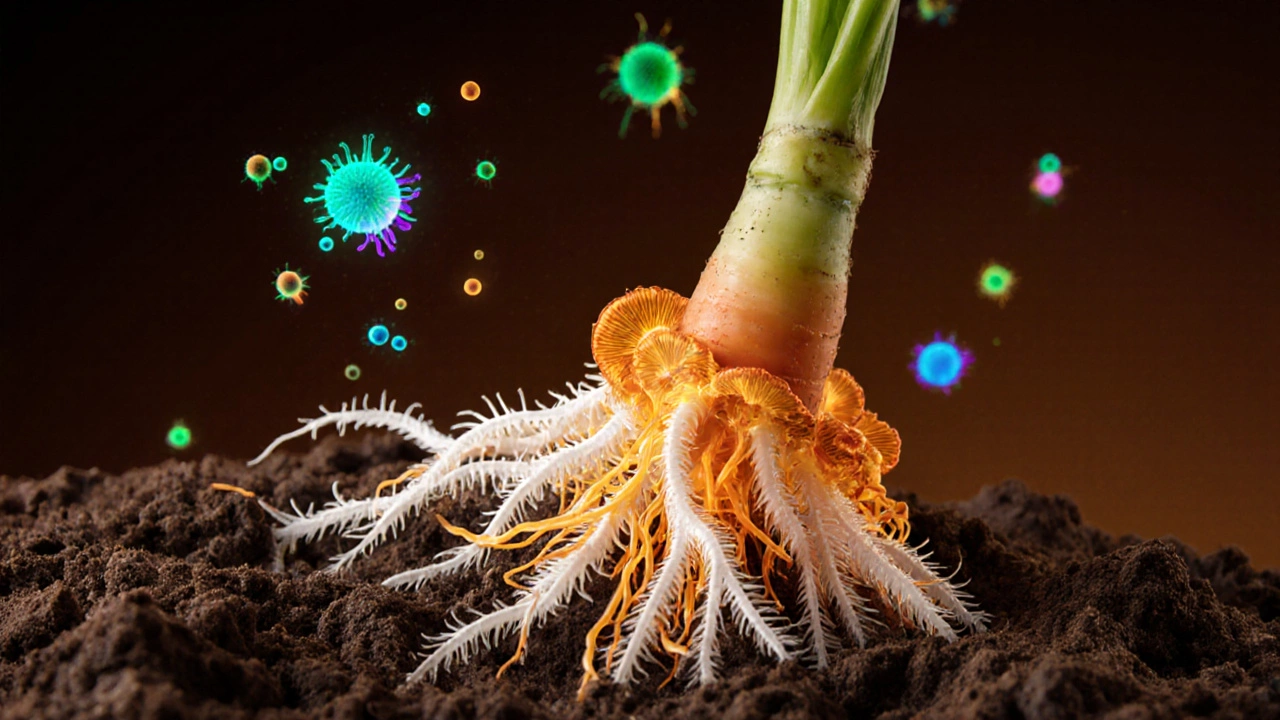
Quick Checklist for Soil‑Centric Gardening
- Perform the feel, smell, and color test on existing soil.
- Get a DIY pH kit; aim for 6.0-7.0.
- Add a 2‑inch layer of compost each spring.
- Mulch beds with 3‑inch organic material after planting.
- Review drainage; install trenches if water pools.
- Choose appropriate irrigation (drip or soaker hose).
- Apply lime or sulfur to adjust pH if needed.
- Introduce cover crops or green manure in off‑season.
- Avoid heavy tillage and synthetic pesticides.
- Monitor plant vigor and adjust amendments yearly.
Following this list turns the soil into a living, self‑regulating system that feeds your garden year after year.
Comparison of Key Garden Factors
| Factor | Effect on Plant Growth | Ease of Improvement | Typical Cost |
|---|---|---|---|
| soil health | Directly impacts water retention, nutrient availability, and root protection. | Moderate - needs organic amendments and occasional testing. | Low to moderate (compost, mulch, occasional lab fees). |
| water management | Essential for preventing drought stress and root rot. | Easy - install drip lines or rain barrels. | Low (hoses) to moderate (drip kits). |
| sunlight exposure | Controls photosynthesis; too little limits growth. | Hard - depends on site orientation and shading. | Varies (pruning trees, reflective surfaces). |
| plant selection | Choosing varieties suited to climate eases care. | Easy - use local seed catalogs. | Low to moderate (seed cost). |
The table makes clear why focusing on soil health gives the biggest bang for your buck. Water and sunlight are vital, but you can’t fix a barren soil with a sprinkler alone.
Common Pitfalls and How to Avoid Them
- Over‑compacting soil: Walking on wet beds or using heavy machinery squeezes pores. Step back, use a broad fork, and let soil dry before working it.
- Relying solely on chemical fertilizers: They feed plants but ignore microbes. Pair a modest NPK dose with compost for balance.
- Skipping mulch: Exposed soil dries fast and weeds win. Even a thin straw layer makes a big difference.
- Ignoring pH: Plants may look healthy but silently suffer nutrient lockout. Check annually.
By catching these mistakes early, you keep the soil ecosystem thriving and your garden productive.
Frequently Asked Questions
How often should I test my soil’s pH?
A good rule of thumb is once a year, preferably in early spring before planting. If you notice yellowing leaves or poor growth, test again.
Can I improve soil health without buying commercial compost?
Absolutely. Kitchen scraps, coffee grounds, shredded newspaper, and leaf mold all break down into rich organic matter. A simple backyard compost bin can supply enough for several beds each season.
What’s the quickest way to increase water retention in sandy soil?
Add a generous layer of organic mulch and incorporate coarse compost. Over time the soil particles bind with organic matter, forming a sponge‑like texture.
Do I need to till my garden every season?
Not if you keep adding organic matter on the surface. No‑till or shallow fork‑mixing preserves fungal networks and reduces erosion.
How can I tell if my soil lacks beneficial microbes?
Slow plant growth, frequent disease, and a foul smell are clues. Adding compost tea or a mycorrhizal inoculant can jump‑start microbial activity.
